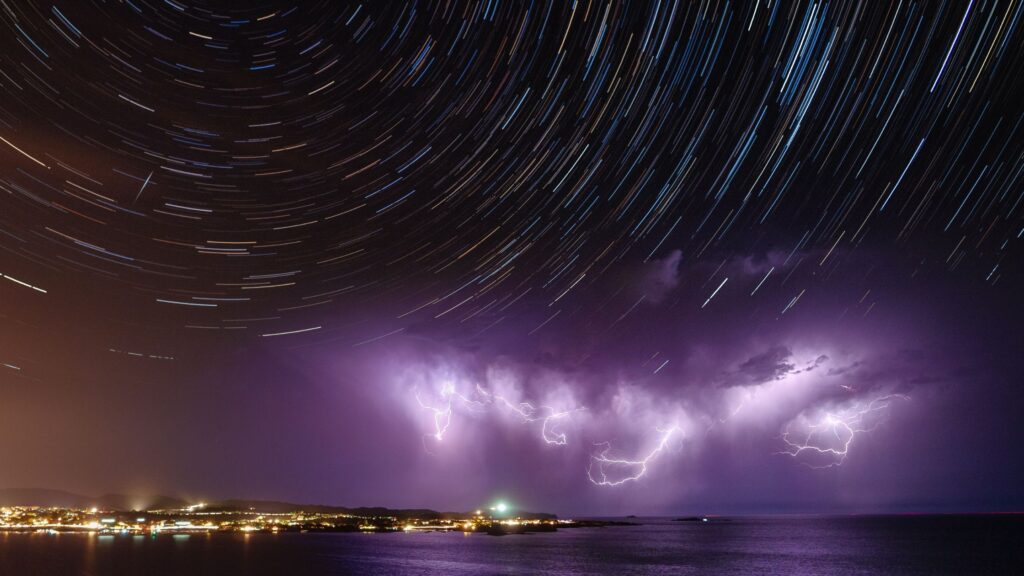Attention stargazers around the globe, it’s the beginning of a new year that promises to bring many night spectacles. One such event is the Quadrantid meteor showers, which radiate the sky in the Quadrans Muralis constellation. Quadrans Muralis is a constellation discovered or created by Jérôme Lalande in 1795. However, the Quadrans Muralis is not recognised by the International Astronomical Unit in the list of modern constellations.
To locate the constellation, stargazers or seekers should look in between the constellation Bootes and Draco—near the end of the handle of the ‘Big Dipper.’ You can easily get the location of these places using a smartphone app—available on different platforms. So, brace yourselves and dive into the spectacle of night with your loved one.
An Overview of Quadrantid Meteor Showers
The Quadrantid meteor showers are also known as Bootid showers because of their origin in the constellation Bootes direction. The former or the original name is not in use by modern astronomy. However, leaving that aside, the meteors are the remains of the Asteroid 2003 EH1—a complicated name but one can understand that 2003 means its year of discovery. Well, that’s how the terminology in astronomy works.
Origin and More
Asteroid 2003 EH1 is the parent body of the Quadrantid meteor shower as proposed by a prominent scientist—Peter Jenniskens. A parent body means that the meteors are the remains of that bigger object such as an asteroid. After getting detached from the parent body, these small particles get into the atmosphere where they are ignited and a glaze of light—for a few seconds appears.
Location and Viewing
The best time to view the meteor shower is on Jan 3, 2024—from late night to early dawn as around 100 meteors can appear in an hour. Moreover, people who live in remote areas do not have any trouble when it comes to watching meteors. All they have to do is find the constellation and look patiently in that direction. However, people living in cities will get the trouble because of light pollution. Thus, they need to travel far and high from the city, if interested in capturing different amazing night objects.
Elevate Your Viewing Experience of Quadrantid Meteor Showers
If you are a stargazer and want to improve the gazing experience of different night objects—in this case let’s suppose you’re looking for a Quadrantid meteor shower, then keep these things in mind as it will surely have a positive impact on your viewing experience.
- Get far from the city to a higher place and if there is a full moon, then good luck.
- Dress properly in the winter season as it can get late and cold
- Install apps for better navigation, however, don’t use mobiles in excess as it will affect the adjustment of your eyes in the night.
Conclusion
Stargazers worldwide are excited to witness the Quadrantid meteor showers, a night spectacle in the Quadrans Muralis constellation. Located between Bootes and Draco, these meteors are the remains of Asteroid 2003 EH1, which was discovered in 2003. The best time to view the shower is on Jan 3, 2024, from late night to early dawn. To enhance your viewing experience, consider travelling to a higher location, dressing appropriately for winter, and using apps for better navigation.
Frequently Ask Questions (FAQs)
Where can I see Quadrantids?
You can see the Quadrantid meteors in a remote area, away from the light pollution. Make sure to reach a higher point and with the right equipment—your eyes are enough to capture the beauty of the night.
What is the meaning of Quadrantids?
Quadrantids was a constellation created by Jérôme Lalande in 1795. He gave the name to the pattern of the stars which he at the time visualised across the horizon.
How can I see a meteor shower?
To see a meteor shower, follow the given steps:
- Get to a remote area
- Reach a higher point
- Navigate the location
- Be patient
Where did the Quadrantids meteor shower come from?
The Quadrantids meteor shower is the dust and particulate remains which come from the asteroid 2003 EH1.

